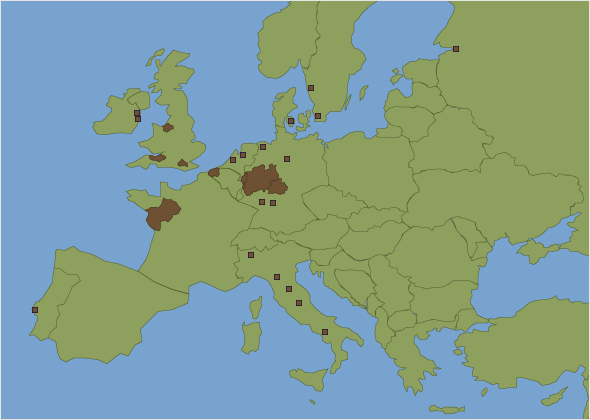Gardens are a result of changing ideas, technologies, social conditions, artistic movements, economic issues, and simply the need for change. They are also the result of people – designers, owners, gardeners, artists, politicians and scientists; we should also understand how the garden is used in both the public and private realm. We have ignored the role people when dealing with the history of gardens, an issue recently identified by Sam Youd, Head of Gardens of Tatton Park. Emphasis has been placed on the iconic gardens and named designers/artists such as Gertrude Jekyll ( Loseley Park and Hestercombe, UK), Humphry Repton (Rode Hall and Tatton Park, UK), Peter Joseph Lenné ( Bad Oeynhausen Spa Park , D), Frédéric Lemot (La Garenne Lemot, F). However, the majority of gardens owe more to their owners than to named designers such as Charles Hamilton at Painshill (UK), or Gérard Gignoux who developed his gardens at Château du Pin on the ideas of Gertrude Jekyll and Edwin Lutyens. There are few truly new ideas as most can be traced to many sources. Even the English garden style, which eventually crossed Europe like a plague by destroying so many formal gardens, has its sources in antiquity as well as responding to contemporary issues of economics, art, literature and fashion. The English quality of ‘reasonableness’ was identified as a primary reason for the destruction of the formal garden in England as it failed to produce anything, was expensive to maintain and had little interest through its lack of variety . Contemporary gardens do create some new and fresh ideas or even innovations, but these elements have their sources within the genealogy of the garden. There are gardens that define new movements; the contemporary gardens that allow us to see them as fresh visions. Geoffrey Jellicoe did this at the Cadbury Factory (UK), while Peter Latz opened the eyes of the world to seeing our industrial heritage in a new light at Landschaftspark Duisburg-Nord (D).
Look at gardens as types, but look beyond the obvious and discover the complexity, the connections, and the sources of the ideas that have created these living art forms. They are all individual and have unique properties; gardens are one of the few things in life that cannot be copied or mass produced. Even when we copy what we most admire, we need to adapt to local situations otherwise the result is ‘the body without the soul’. Similar problems occur when dealing with the care and management of our historic parks and gardens. How can we maintain them and allow them to flourish with modern constraints and yet preserve their historic integrity? While a garden may be considered as a living museum, it is the ability of gardens to allow for change, indeed this is part of the very essence of gardens. Decisions on how to manage, what to change, what to alter or lose are never taken lightly and these cannot be found within a formula. Each garden is unique in its own right and must be addressed as such. But there are common issues that EGHN has sought to identify and address, but more importantly EGHN has looked at the potential of parks and gardens to demonstrate how they can be an integral part of our society.
Author:
Prof. E M Bennis, Manchester Metropolitan University
for EGHN, 2006
References:
(i) Bennis, E Connecting History and Theory in Landscape Architecture, 1st International Landscape Studies Education Symposium Tongji University: Shanghai, China 27-30 October 2005; presented paper, published as conference proceedings
(ii) Weaver, L (Ed) The House and Its Equipment Country Life, ND p147 This is from a chapter by Gertrude Jekyll titled ‘On Garden Design Generally’
(iii) Hunt, J D (Ed) The Italian Garden: Art, Design and Culture Cambridge University Press, p2
(iv) Treib, M (Ed) Modern Landscape Architecture: A Critical Review MIT Press, Cambridge, Mass. 1993 pIX
(v) Pevsner, N The Englishness of English Art Praeger, New York 1955 pp114-115
